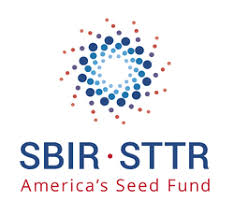Self-Assessment Checklist
Answer a few questions to see if you are correctly and efficiently handling your SBIR grants and contracts.
 Page Summary
Page Summary
 The Small Business Innovation Research (SBIR) program is a competitive program in the United States that encourages small businesses to engage in federal research and development (R&D) with the potential for commercialization.
The Small Business Innovation Research (SBIR) program is a competitive program in the United States that encourages small businesses to engage in federal research and development (R&D) with the potential for commercialization.
Here are key points about SBIR grants:
- Purpose: The primary goal of the SBIR program is to stimulate technological innovation and provide small businesses with the opportunity to participate in federal R&D with a focus on commercialization.
- Government Agencies: Several federal agencies, including the National Institutes of Health (NIH), the National Science Foundation (NSF), the Department of Defense (DoD), the National Aeronautics and Space Administration (NASA), and the Department of Energy (DoE), and others, participate in the SBIR program. Each agency has its own set of priorities and topics for funding.
- Three-Phase Structure: The SBIR program typically has a three-phase structure:
• Phase I: Feasibility Study - Small businesses receive funding to explore the scientific, technical, and commercial feasibility of a proposed innovation.
• Phase II: Research and Development - Successful Phase I awardees may receive additional funding to further develop their concepts and move closer to commercialization.
• Phase III: Commercialization - This phase involves the commercialization of the innovation with non-SBIR funds. It is not directly funded by the SBIR program but is an essential step for bringing the technology to the market. - Eligibility: To be eligible for an SBIR grant, a business must be a small business in accordance with the U.S. Small Business Administration (SBA) size standards. The business must be American-owned and independently operated.
- Competitive Process: SBIR grants are awarded through a competitive process. Businesses submit proposals in response to specific solicitations from federal agencies. The proposals undergo a rigorous review process, and successful applicants receive funding.
- Intellectual Property: Companies that receive SBIR funding typically retain the intellectual property rights to the technologies they develop.
- Commercialization Emphasis: The SBIR program places a strong emphasis on the commercialization of the technologies developed. Applicants are often required to demonstrate a clear path to bringing their innovations to market.
SBIR grants have played a crucial role in supporting innovation and the growth of small businesses in the United States. They provide an avenue for entrepreneurs and researchers to turn their ideas into viable products or services with the potential for broader societal impact. The Small Business Innovation Research (SBIR) Phase I and II are the critical stages of the federal program designed to support and promote research and development (R&D) conducted by small businesses in the United States.
Here's a Breakdown of SBIR Phase I & II
-
 Phase I Predecessor: Typically, before a small business can participate in Phase II, it must go through a Phase I SBIR award. In Phase I, the company receives a relatively small grant to conduct feasibility research or initial development of a new technology or product concept. Phase I serves as a proof-of-concept stage.
Phase I Predecessor: Typically, before a small business can participate in Phase II, it must go through a Phase I SBIR award. In Phase I, the company receives a relatively small grant to conduct feasibility research or initial development of a new technology or product concept. Phase I serves as a proof-of-concept stage. - Phase II Award: SBIR Phase II provides more substantial funding to small businesses that have successfully completed Phase I and demonstrated the feasibility of their proposed innovation. Phase II grants are intended to support further R&D efforts and the development of prototypes or detailed plans for commercialization.
As part of your Phase II proposal, you’ll need to describe your commercialization plan which describes your plan for bringing the technology or product to market. A successful commercialization plan includes describing your plans for putting in place the infrastructure needed to successful operate your business as well as how you plan on marketing the outcome of the research. Your plan for the infrastructure must include setting up an accounting system to manage your business according to cost accounting rules established by the government as well as providing required financial reporting. - Project Duration: Phase II projects are longer in duration compared to Phase I. They typically last for a period of 2 years, although the specific duration can vary depending on the funding agency and the nature of the project.
- Commercialization Emphasis: SBIR Phase II places a strong emphasis on the commercialization of the technology or product developed during the project. Small businesses are expected to use the Phase II funding to advance their innovations toward commercialization in the marketplace.
Learn more about SBIR Commercialization - Competitive Process: SBIR Phase II awards are granted through a competitive process. Small businesses must submit detailed proposals outlining their R&D plans, commercialization strategies, and budgets. These proposals are evaluated by review panels, and the most promising projects are selected for funding.
- Funding Amount: The amount of funding awarded in SBIR Phase II varies by agency but is generally higher than in Phase I. The specific funding amount depends on the agency, the project's scope, and the technology area.
- Commercialization Assistance: Many SBIR programs offer additional support, such as mentorship, access to resources, and guidance on navigating regulatory processes and intellectual property issues, to help small businesses successfully bring their innovations to market. If your grant was awarded using cost-reimbursable contract, you may need to consider hiring an accountant with experience in government contracting to ensure you handle the funding properly or take a look at AtWork Systems' Managed Services.
Overall, SBIR Phase II is a crucial stage in the SBIR program, enabling small businesses to build upon the achievements of Phase I and move closer to commercializing their innovative technologies and products. It plays a vital role in fostering innovation, stimulating economic growth, and supporting the development of new solutions across various industries.
